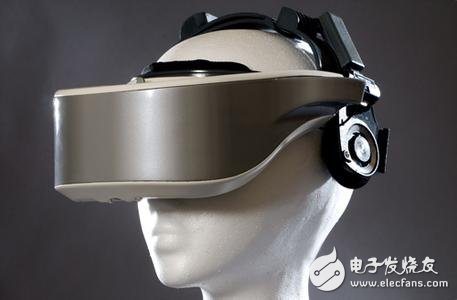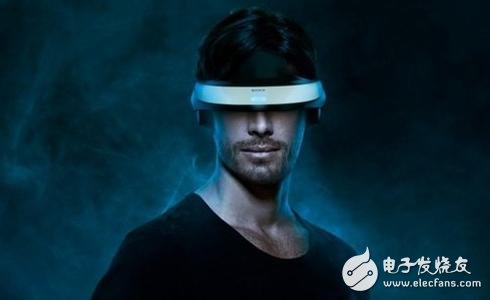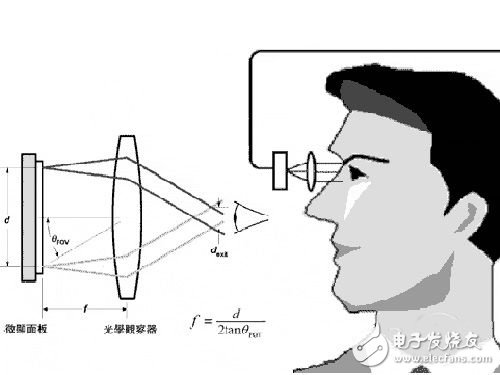Can the projector be carried with you? The advent of head-mounted displays answers this question, that is, the projector can be carried not only with it, but also with many features that were not previously available.
The head-mounted display device is essentially a projector system, a mini, intelligent portable projection display product. The launch of google glasses has refocused people's eyes on the head-mounted display. Head-mounted displays are not new. As early as around 1960, the first generation of head-mounted displays began to appear. In the 1990s, many manufacturers also launched a round of promotion for head-mounted displays, but because of technology and Many reasons for practicality have not caused much repercussions. It is also the first civil wave of head-mounted displays.

Head-mounted display, as the name suggests, is a portable display. Compared with the traditional display, the shape of the head-mounted display is generally the mode of the helmet. Now with the advancement of technology, there are also many head-mounted displays that are lighter and thinner. Modes, such as the famous google glasses mentioned above, can also be considered as a type of head-mounted display.
In addition to the difference in appearance, in terms of display technology, the head-mounted display and the ordinary display also differ. Ordinary displays use panel imaging, and the display mode of head-mounted displays is roughly divided into two types: one uses a small-sized panel to image, including LCD, LCOS, OLED, etc., and then projects the image into the human eye, quite A small projector system is set up in front of the human eye. The other is laser scanning display technology, which directly writes information on the retina through a microelectromechanical system.
Development of head-mounted displays
Ivan Sutherland is an expert in computer graphics in the United States, and his series of studies have played an important role in the development of head-mounted displays. In 1968, he showed the eyepiece of the first helmet display at Harvard University. Based on this research, the head-mounted display has achieved good results in aircraft, ground vehicles and ship training.

Head-mounted display was first applied to military equipment
The earliest head-mounted displays were mostly single-purpose helmet models. For example, the Apache helicopter of the 1980s deployed a forward-looking infrared sensor in the forehead of the nose cockpit. The image obtained from this sensor was finally transmitted. Above the eyepiece of the head mounted display.
Subsequent binocular head-mounted displays have also begun to appear and are increasingly being used in other fields, such as the medical field. The probe is introduced into the human body or the end of the endoscope transmits a visual image, which is then transmitted to the head-mounted display so that the doctor can directly correlate the acquired information with the internal structure of the human body. However, this technology is not very mature at present.

Commercial trials have begun
The temptations in the professional field paved the way for the civilian use of head-mounted displays. Since the 1990s, many manufacturers have begun to test the civilian use of head-mounted displays. However, the mainstream display technology at that time was CRT, and the typical feature of CRT technology was its large size, so the test was not successful. However, with the development of LCD technology and the emergence of OLED, the development of head-mounted display was re-acquired.
Today's head-mounted display is moving in a new direction, which is inextricably linked to the rise of smartphones. The maturity of the mobile system and the market has made the head-mounted display out of the simple display function, and has the function of augmented reality. The so-called augmented reality is that while users see the real world, they can also see virtual annotation information, and even browse the web, send emails, etc., but this road is still very long, because the technical obstacles are many.
In general, head-mounted displays with panel imaging are mostly used for civilian use. Many of the head-mounted display devices in the market now use this principle, such as Sony's HMZ-T2. Laser scanning display technology is often used in military equipment, such as pilot helmets.
A head-mounted display is not a simple display device, unlike a computer monitor, which is different from a normal projector. Usually head-mounted devices usually have interactive functions. In the future, they may be equipped with many new technologies such as voice commands, somatosensory interaction, camera, navigation, etc. In general, head-mounted display devices are more like a "floating" in the air. Mobile phone.
Technical barriers to head-mounted displays
There are many technologies involved in head-mounted displays, projection technology, display technology, optical technology, ergonomics, somatosensory interaction technology and so on. From the current head-mounted display products, although the application technology is very numerous, many of the technical applications involved are not perfect. As a result, the size of the display is too large, people wear discomfort, the image display is not clear, and the like.

Head-mounted display devices involve a wide range of technologies
At present, the technical difficulties of head-mounted displays mainly focus on panel resolution, optical system, power supply and market supply. The first is the resolution. The resolution of the current head-mounted display is almost beyond the XGA level, and many stay at the 854X480 stage, which is due to the size of the panel. If the panel is too large, the overall size of the head-mounted display will also become larger, the panel will be reduced, and the resolution will not go up. A viable solution is to increase the number of pixels in a particular size, but this requires that each pixel be much smaller than it is today, and wait for advances in technology to make it possible.
Then, the design of the optical system, the function of designing the projection in the glasses-sized device, the required optical system must be extremely precise, and when designing the optical system, the user's field of view problem must also be considered. The so-called field of view is The size of the human eye can be seen, the field of view is too large, the overall size of the head-mounted display is large, the field of view is too small, and the practicality of the head-mounted display is greatly reduced. In addition, such as the requirements of the human eye pupil change on the optical system, the impact of the human activity on the overall optical system, the impact of the pixel size on the optical system, etc., too many technical difficulties need to be overcome.
In addition, although the introduction of OLED self-illuminating panel technology has brought a new dawn to the head-mounted display, the problem of power supply life and the supply of large-scale OLED panels have cast a shadow on the development of the head-mounted display.
Head-mounted displays need to overcome a lot of problems, which is why many people are not optimistic about google glasses, in fact, even Google's own confidence is not very sufficient, while google glasses are scheduled, google has also stated that product development may be terminated.
Gyroscope Robot Vacuum Cleaners
Gyroscope Robot Vacuum Cleaners,System Vacuum Cleaner,Vacuum Cleaner,Automatic Charging
NingBo CaiNiao Intelligent Technology Co., LTD , https://www.intelligentnewbot.com
